THE CSA
COOKBOOK
NO-WASTE RECIPES FOR COOKING YOUR WAY THROUGH A COMMUNITY SUPPORTED AGRICULTURE BOX, FARMERS MARKET, OR BACKYARD BOUNTY
LINDA LY
PHOTOGRAPHY BY WILL TAYLOR

Contents
preface
Growing up in an Asian household, Ive seen and eaten my share of somewhat strange foods: pepper leaves, pea shoots, broccoli flowers, and sweet potato vines, not to mention the nose-to-tail portions of nearly every animal that appeared on my plate. Of course, they didnt seem strange to me at the time; they were just whats for dinner. Most of our meals were vegetable-centric, due in part to a sense of thrift and the food culture in my familys homeland. In their belief that no food should ever be wasted (Because there are children starving in Vietnam! theyd say), my family fully utilized every part of the plant they brought home from the market.

This was all before the back-to-the-land movement in urban backyards and the farm-to-table trend in fancy restaurants. We were eco-friendly before it was even a thing, and its not that we were especially ahead of our time. My family lived through war-era Vietnam, where supplies were scarce. Since refrigeration was a luxury, they shopped as needed, every day, from one of the many farmers stalls down the street. Food was always fresh, because that was the only way my parents knew how to cook and eat. They couldnt afford a microwave in the early days of life in America, so they cooked the old-fashioned way: on a stove, with a bevy of pots and pans. Even after a long day at work, my parents would dutifully prepare dinner as a way to wind down and catch up with each other; many a chatter and debate was had in the kitchen over a sink full of salad greens.
While our neighbors were dishing up blue boxes of macaroni and cheese in less than ten minutes, we were meticulously rinsing rice, washing herbs, chopping vegetables, and steaming whole fish, head and all. There was no such thing as compost because we hardly had anything left over to compost. If it came with the plant, it was prepared and eaten.
Coming from a culture where food was a celebration of life and meat was a special-occasion splurge, my family sat down every night to home-cooked meals that consisted of one part meat and three parts vegetables, long before First Lady Michelle Obama ever unveiled the new food pyramid that encouraged something similar.
I was taught to eat everything off my plate (because there are children starving in Vietnam, of course) and taught that all parts of the plant were one and the samethat the roots, stems, leaves, seeds, and flowers were equally precious. Whenever I tried to wiggle my way out of eating, say, bamboo shoots, my mom would remind me that [insert random plant part here] was b , or nutritious. According to her, every vegetable was utterly nutritious or good for curing something, whether it be the common cold or high cholesterol. (It wasnt until decades later that I finally realized Mom was rightfood is medicine.)
, or nutritious. According to her, every vegetable was utterly nutritious or good for curing something, whether it be the common cold or high cholesterol. (It wasnt until decades later that I finally realized Mom was rightfood is medicine.)
I cant say I really appreciated any of that as a kid, which is probably true of a lot of first-generation Asian-American kids. I rebelled against the horror that was homemade food and complained about the time it took to prepare a meal when pizza was just a phone call away. I even tried to trade lunches at schoolbut who would want a bnh m, a Vietnamese baguette filled with fresh vegetables and herbs, over a PB&J made with Wonder Bread, Skippy, and Smuckers?
In spite of it all, fresh whole food was what Id always known. It was familiar and, well, it was made for me and made with love. I ate whatever my parents put on the tablethings that other people thought were exotic, but for me was just another trip down the Asian grocery aisles. Bags of pea sprouts and bundles of squash shoots were as ho-hum as a head of cabbage.
It wasnt until after college, when I started paying more attention to food and learning how to cook for myself, that I realized how much of it is really wasted in the American kitchen. Wandering the produce aisle of the local grocery, I would see sad bunches of greens attached to beets and neatly bundled leeks with dark green ends that looked like an afterthought. Many of my friends didnt even know you could eat radish greens, let alone carrot greens. It seemed like half the vegetables you purchased went straight to the trash or, at best, made for some rather expensive compost. For someone whose childhood dinner rotation included stalks and stems and other trash, it was startling and eye opening.
As soon as I started cooking, other peoples discards were destined for my dinner plate. I became quite adept in scrap artistry, taking the odds and ends of my vegetables and turning them into full-fledged kitchen pantry meals, meals that came together with whatever ingredients I had on hand in my tiny apartment on my limited budget. I was a fan of vegetables that offered twofers (or more), such as crunchy beets with tender leaves or pumpkins that provided sustenance through their seeds, flesh, flowers, and leaves. Cooking this way was less wasteful, for sure, but also more interesting. Flavor can be found in unexpected places.
fast forward to the summer of 2010
I moved into a little house with a big, big backyard on the Southern California coastvirtually unheard of in a community where land is a commodity. Until that year, I never truly had a space to call my own. All the public courtyards, communal rooftops, and fire escapes in the artist lofts I lived in for nearly a decade were just thatshared spaces with managed landscapes. I was intrigued by gardening but also discouraged, as the narrow windowsills and limited light did little to support the few potted herbs I tried to grow.
The previous owners of the house had started an organic vegetable garden right off the kitchen, an impressive array of raised beds set on a terraced slope with southern exposure. When I moved in, smack dab in the middle of summer, the garden was already going off with tomatoes, peppers, beans, and squash of all kinds.
Truth? I was intimidated by this garden and didnt step foot inside it for the first couple of weeks. After a dismal track record of killing many an herb on my windowsill, I was worried Id kill this garden, too. But as I began to harvest one, then two, then four zucchini a day from plants that thrived (or survived?) under my care, I realized that even thumbs as black as mine could be converted. As I like to say now, there are no black thumbs, only green thumbs in training.


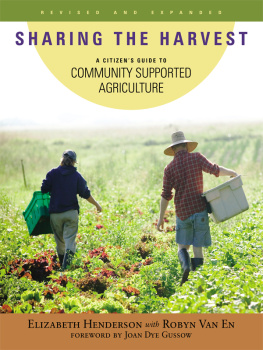

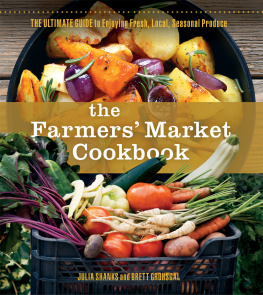
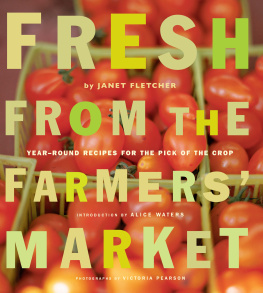
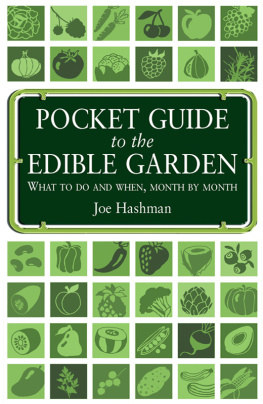
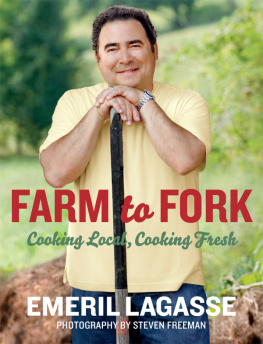
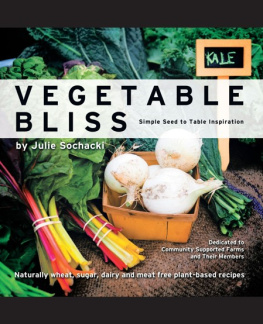






 , or nutritious. According to her, every vegetable was utterly nutritious or good for curing something, whether it be the common cold or high cholesterol. (It wasnt until decades later that I finally realized Mom was rightfood is medicine.)
, or nutritious. According to her, every vegetable was utterly nutritious or good for curing something, whether it be the common cold or high cholesterol. (It wasnt until decades later that I finally realized Mom was rightfood is medicine.)